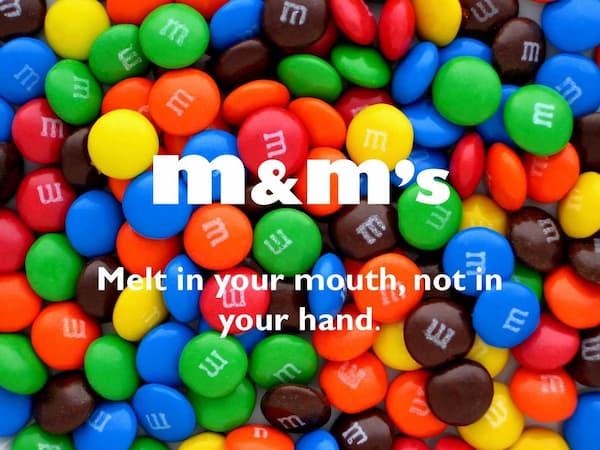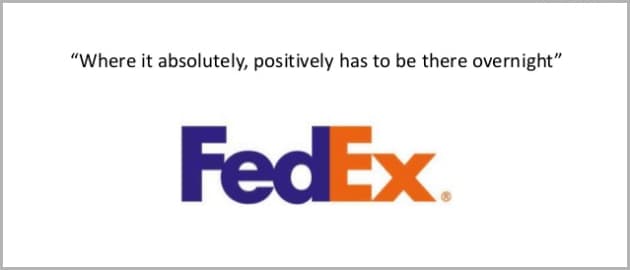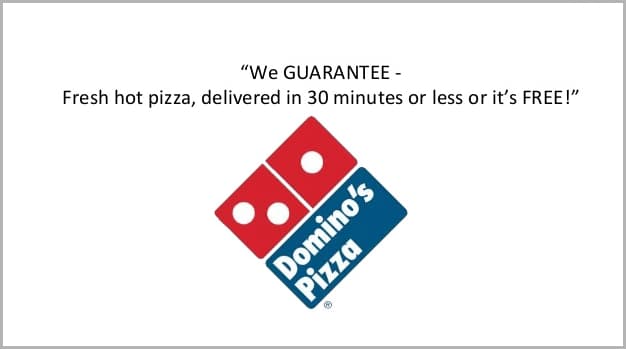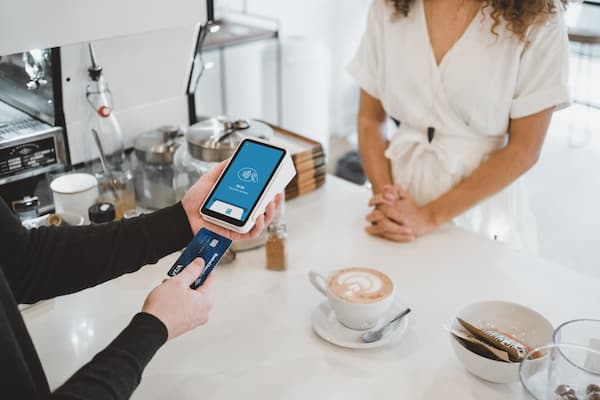How to develop your unique selling proposition (quickly)
In layman’s terms, a unique selling proposition (USP) describes your business, product or service as the solution to a problem your ideal customers know they have. Ideally, your USP express that value in a way that is specific to your company, product or service.

How’s that for a tasty unique selling proposition?
A good USP should boil down to one sentence that’s easy to remember for customers and you. Your USP should be easy for your target market to remember because it’s how your company stands out from the crowd. At the same time, it should be easy for you to remember because your USP should be in your mind anytime you write marketing content — everything from your landing pages to your social media and lead magnets.
Companies stand out by crafting a USP that differentiates them from their competitors. But you don’t win just by being “unique”. You win by being different in a way your target audience values.
What’s the benefit of creating a unique selling proposition (USP)?
A unique selling point (or unique selling proposition, your choice) matters to small business and large business alike. The benefit to every business owner of developing a compelling USP is the ability to cut through the clang of competing messages in the ears of your potential clients. That’s why your marketing strategy should demand you define your USP before you spend a dollar on advertising.
With so many choices available, a consumer’s research can take forever, and it can be difficult for a new customer to make up their mind. As a prospect drowns in that research, you can throw them a lifebelt in the form of a USP that makes them think, “Yes, that sounds like me. Sign me up.”
With a well-crafted, easy-to-remember USP you can reach potential customers in a way that assures them you’re the irresistible choice. And by talking convincingly about what makes you different, you’ll stop wasting money on marketing that’s same-same next to your competitors’ advertising.
When you’ve got your USP right for your target audience, your marketing asserts confidently: “Trust me; I’m going to make your life better.”
Because you’re speaking consistently to a compelling point of difference, your audience will know what your business stands for and how it stands apart. And when you’re well-known for the things that are important to your customers, you don’t have to be known for everything.
Creating a good USP will save you money

Limiting yourself to being known for a few things (or even just one) will save you money and wasted effort on advertising. You save money because you’re spreading your marketing investment over too many messages. When you lay your messages too thin, you have to spend money on each of them, all to make yourself less credible. What business has the highest quality of expertise, the lowest prices and the ability to deliver in the next five minutes?
Also, customer service is easier after you create a USP because you’ve done the work to understand what your customers value about you.
What makes a good USP

A compelling USP should be:
- Confidently expressed and backed by evidence: “We’re the leading…” is bland, cliched and impossible to prove convincingly. You want something specific that you can prove.
- Meaningful to customers: Your customers don’t care that you had to try five Chinese factories before finding the perfect supplier. Your customers care about what they’re getting.
- Deeper than a tagline: Slogans are fun, but “Just do it” and “Own tomorrow” aren’t USPs; they’re as shallow as a jingle. Being “America’s most popular meal kit” is where Hello Fresh got to because of its USP; being popular is not Hello Fresh’s USP, despite what some marketers think.
A secret about unique selling propositions
Understandably, you might previously have got hung up on the word “unique” — it’s one of only three words in the phrase “unique selling proposition”. However, your USP doesn’t have to be what makes you unique. Your USP could be something that all your competitors do, but that’s also something they don’t talk about. By focussing your customers on this aspect of what you do, you can come to own it.
Focussing on what customers will value and might not know is what a famous copywriter did when he toured the Schlitz beer company. The copywriter learned how much Schlitz invested in making sure everything that went into its beer was pure. When the copywriter suggested purity as a USP, the brewers told him that all beers are made from pure ingredients. Yes, said the copywriter, but the public doesn’t know that because none of you talks about it.
That’s how Schlitz became the “pure” beer and went from eighth in the market at the time to the top of the charts.
So the USP secret is that you don’t have to “unique”; you just have to express your difference.
Should you use exaggeration when developing your USP?
Some people think it’s okay to use exaggeration in your USP. They think hyper-exaggeration is like winking at the audience — “When we say we’re the ‘greatest’, we know that you know that we know that we’re exaggerating, but our swagger says we’re pretty damn hot, no?”
But a good USP is about expressing your difference and value, not getting cute with winks and swagger. There is something different about your business, and you’ll benefit when you did harder to find and express it. Customers are bored of companies dolloping out bullshit like only, greatest, best, first, favourite… It’s all just noise.
Sure, hyperbole could be said to communicate your enthusiasm and belief in the product. It could also be said to be deeply off-putting to prospects who want to know what actually makes you different.
How to Write a Unique Selling Proposition (USP)
Here’s a simple five-step approach to writing a USP for your business, product or service.
1. Think like your customer
It matters less that you would like what you think sets your business apart from the competition. The point of view that matters is your customers’
- What do they want?
- What are their problems?
- Why have people chosen us before?
- Why have they been choosing our competitors?
It helps to have a structured way to think about defining your ideal customer and what they want. We teach the same USP development structure our copywriters use to describe an ideal client.
2. Think in terms of your customers’ problems
Nobody wants a doctor; they want to be well. Nobody wants a drill; they want a hole. Your customers’ problems might be even more complicated than that. Maybe they’re not only trying to find a supplier of good widgets, but they’re also looking for a supplier to count on in an emergency. It could be that your customers want both your widget and reassurance that you’ll help them with their problems down the line.
When you know what your customers’ real problems are, you’ve got the opportunity to solve them.
It’s important to keep hold of the fact that you’re not looking for what you think your customers’ problems are. You need to find out what your customers think their own problems are. Selling solutions to problems your customers don’t think they have is one reason marketing fails.
Fortunately, your customers’ problems (from their point of view) are easy to find if you know where to look. (And if you want help knowing where to look, try our online course on developing a USP.)
3. Make your business irresistible to your customers
Now that you know who your ideal customer is, the problems they face, and which of your competitors are most appealing to them, it’s time to present the Why You, the reason they should choose you over the other options.
If you’ve done your research properly, you should have a long list by this stage of possible ingredients for your USP. So how do you whittle the list and prioritise? You could start by talking to your team or to your customers. Also, our copywriters use a USP development spreadsheet that we sell through this website. We call it our magic spreadsheet because clients are often amazed when we go through the spreadsheet in a workshop — it’s as if the spreadsheet writes their USP for them by magic.
4. For bonus points, make a promise (if you can)

If you can make a promise to your audience, so much the better. “There in 30 minutes or your money back” is a USP we can all remember.
At least make it specific. Ben & Jerry’s says, “We make the best possible ice cream in the best possible way.” But what does that mean? Best possible how? How is Ben & Jerry’s a better choice for Ben & Jerry’s ideal customers than the other ice creams on the shelf? “Best possible” is too vague to answer that question, which means it isn’t a USP.
5. Cut your USP right back
A strong USP is an opportunity for you to get in front of people and communicate with them, but it doesn’t offer much time to explain anything.
Think of your USP as the answer you get to give at a barbecue when someone asks, “So what do you do?” Your USP isn’t the 14-page brochure that you can give to a prospect further down the line.
How to identify your company’s unique selling proposition
To recap… The information you need to develop your own USP is already out there. You can locate your company’s unique selling proposition by asking:
- What makes your company different from others? (This is what the customer will value.)
- Why do people buy your product over another product in the same market? (This is how you’ll communicate why it’s valuable to customers.)
What will make a difference is knowing where to look, who to ask, what to ask and how to ask it. If you would like some step-by-step help with that from copywriters who develop USPs for clients every day, we’ve packed it all into our online USP course, Making Your Business Irresistible.
